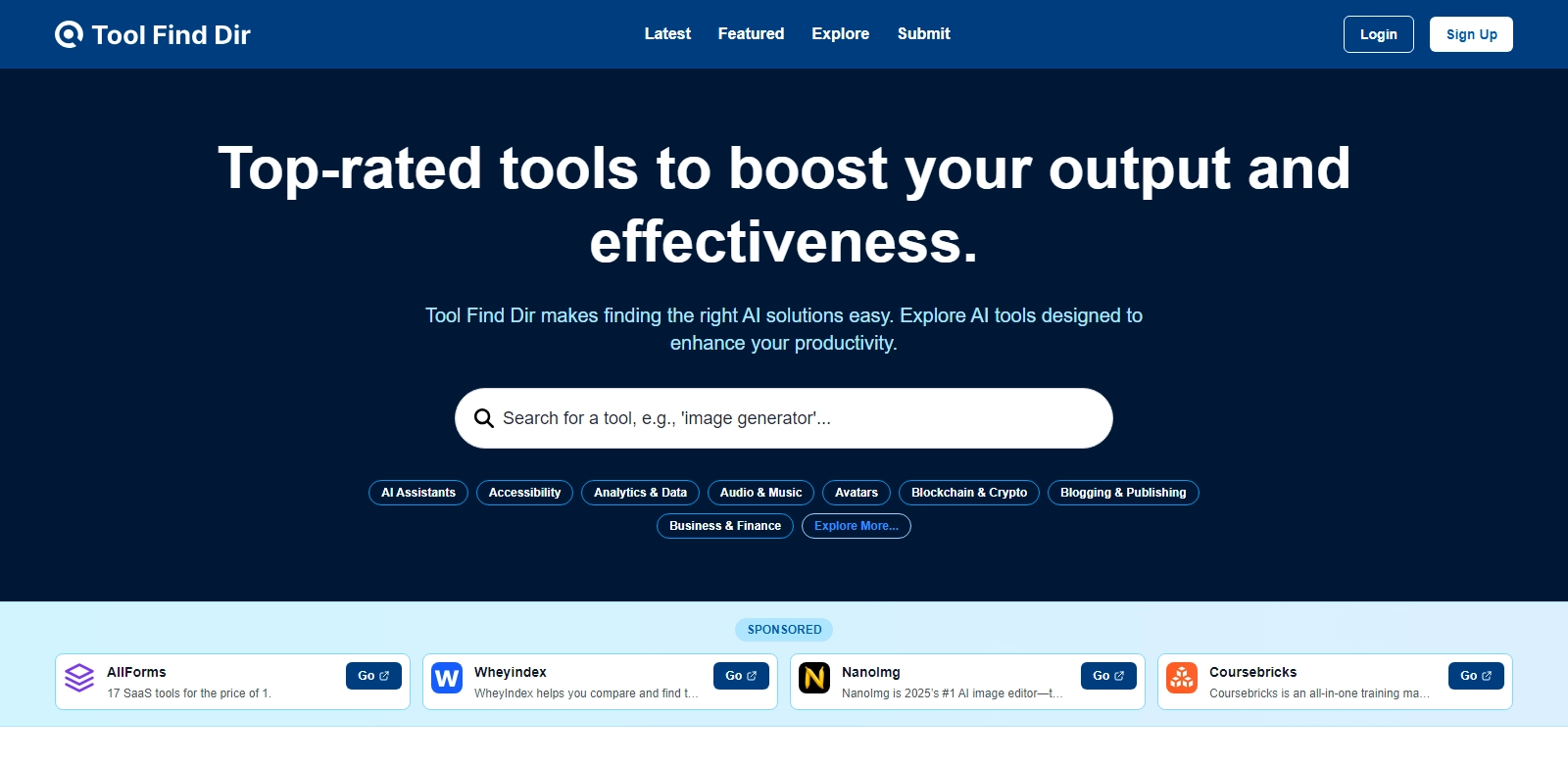Essential Tools for Maximizing Productivity and Output
In today's fast-paced digital landscape, finding the right AI solutions can significantly impact an individual's or a business's productivity. Tools designed to boost output are not just helpful—they are essential for anyone looking to streamline processes and enhance efficiency. This article explores several top-rated tools available on the market, designed to cater to various productivity needs.
Customers of Productivity Tools
Understanding the diverse customer base for productivity tools is crucial. Different organizations and individuals derive unique benefits from using these solutions. The following customer personas illustrate the variety of users and their needs.
-
Small Business Owners:
Small business owners often juggle multiple roles, from management to customer service. Productivity tools help them automate routine tasks, thus allowing them to focus on strategic growth. These tools can integrate seamlessly into their existing workflows, helping them save time and reduce operational costs. -
Freelancers:
Freelancers face the challenge of managing their time effectively while often working on multiple projects simultaneously. Tools that assist with project management and time tracking enable them to optimize their schedules. By utilizing such tools, freelancers can enhance their service delivery and improve client satisfaction. -
Corporate Teams:
In larger organizations, corporate teams must align their efforts to achieve common goals. Collaboration tools that facilitate communication and project management are fundamental. These tools ensure that team members are on the same page and can share resources efficiently, enhancing overall performance. -
Educational Institutions:
Educational facilitators and institutions benefit from productivity tools designed for learning management and administrative functions. These tools streamline educational content distribution, grading, and communication between students and teachers, ultimately creating a more engaging learning experience. -
Health Professionals:
In the healthcare sector, professionals can use productivity tools to manage schedules, patient records, and communications effectively. Implementing AI solutions not only saves time but also improves patient outcomes by allowing healthcare workers to focus more on patient care rather than administrative tasks.
Problems and Solutions by Productivity Tools
As effective as productivity tools are, they address specific challenges faced by users.
Problems Found
-
Inefficient Task Management:
Many individuals and teams struggle with managing multiple tasks across various channels. This disorganization can lead to missed deadlines and decreased productivity. -
Communication Gaps:
In corporate environments, communication breakdowns can result in project delays. Teams often rely on various applications, complicating communication. -
Time Wastage:
Without proper time-tracking measures, professionals often lose track of time spent on tasks, leading to inefficient work hours. -
Difficulty in Collaboration:
Working together remotely has its challenges, including file sharing and collaborative editing, which hinder productivity. -
Information Overload:
With endless streams of information, users may find it difficult to prioritize tasks effectively, leading to overwhelm and burnout.
Solution by Productivity Tools
Productivity tools offer tailored solutions to these prevalent problems. By integrating robust task management systems, they allow users to set priorities and deadlines effectively. Features such as reminders and notifications ensure that deadlines are met. Furthermore, tools designed for seamless communication manage messages and project updates in one location, mitigating communication gaps.
Additionally, time-tracking features help users monitor their work habits meticulously, revealing areas for improvement and fostering accountability. They also provide enhanced collaborative platforms that simplify file sharing and live editing across teams, encouraging real-time collaboration despite geographical barriers.
Use Case
Consider a marketing agency that manages various client projects, often with tight deadlines. By implementing an all-encompassing productivity tool, they can assign tasks to team members, track progress in real-time, and communicate effectively without various app switches. This leads to improved output quality, timely project completion, and ultimately, higher client satisfaction.
Top Features of Productivity Tools
The distinguishing features that make productivity tools vital for various users include:
-
Task Management: The ability to create, assign, and prioritize tasks ensures work is organized and manageable.
-
Time Tracking: Users can monitor the time spent on tasks, which helps in improving productivity efficiency and accountability.
-
Collaboration Tools: Built-in communication channels and file-sharing capabilities enhance collaboration among teams and clients.
-
Reporting and Analytics: Insights into productivity trends allow users to optimize their efforts and assess team performance effectively.
-
Integration Capabilities: Many productivity tools seamlessly integrate with other business applications, providing a unified experience that enhances functionality.
Frequently Asked Questions with Productivity Tools
-
What types of productivity tools are available?
Various productivity tools are tailored for different functions, including project management, time tracking, communication, and collaboration. Some popular categories include task management software, CRM systems, and scheduling applications. -
How can productivity tools improve my productivity?
By implementing structured workflows, offering transparency in task management, and facilitating communication, these tools reduce time spent on administrative processes, allowing for more focus on core tasks. -
Are productivity tools suitable for small businesses?
Yes, productivity tools are suitable for businesses of all sizes. Many solutions scale to meet the needs of small businesses, ensuring they are efficient without overwhelming users with unnecessary complexities. -
Do I need to invest in multiple tools?
Not necessarily. Many comprehensive productivity tools combine various functionalities, allowing users to handle multiple workflow aspects within a single platform, thereby reducing the necessity for multiple applications. -
How can I choose the right productivity tool for my needs?
Evaluate your specific needs, such as task management or communication requirements, and consider tools that provide a trial period. This ensures you can assess their effectiveness for your operation before committing.
For those keen to explore a variety of tools that can aid in enhancing productivity, platforms like Tool Find Dir serve as a valuable resource, assisting users in finding the perfect solution for their unique challenges.
